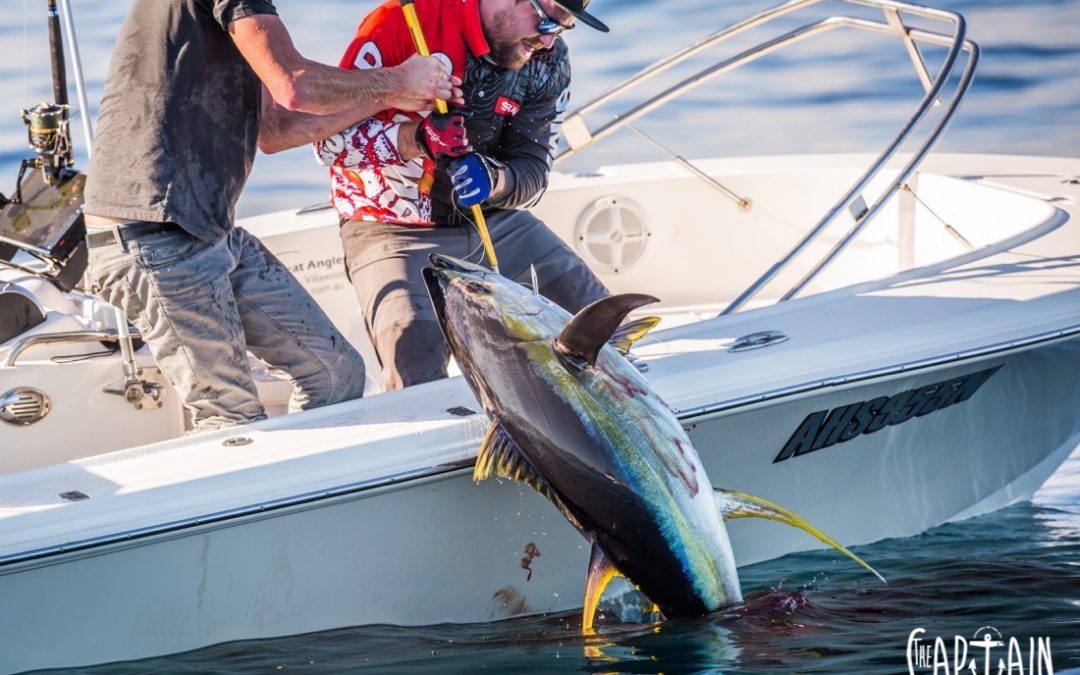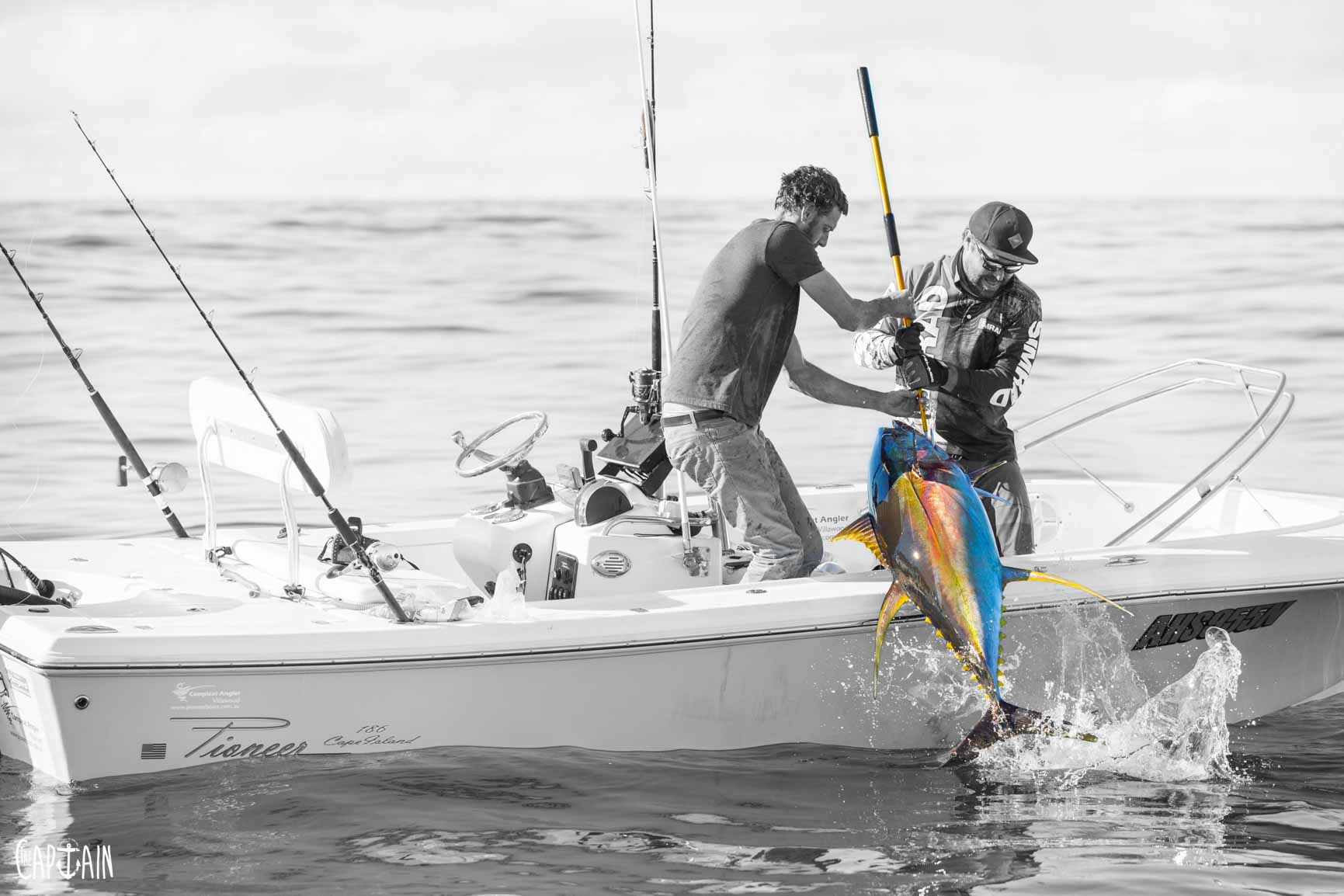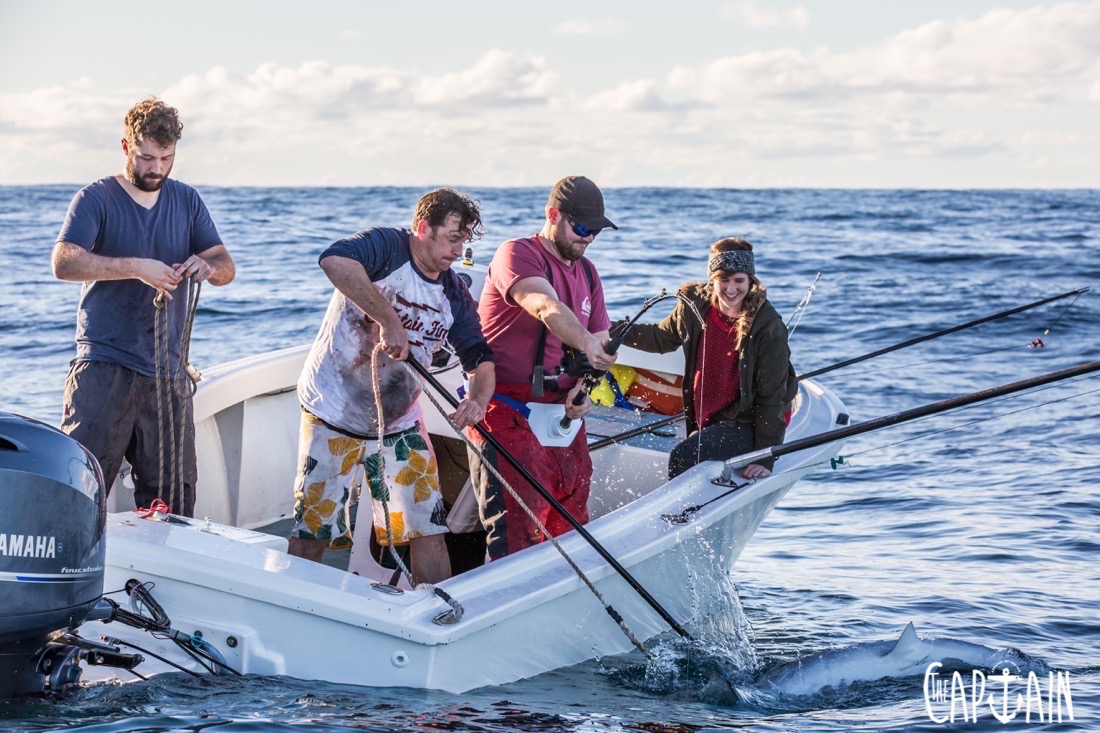Most keen fishos own a good set of gaffs, but these days they seem to collect more rust than they do fish. So when the moment comes to sink the meat hooks into a sea monster, Peter Pakula reckons you’d better be well practised…
If you want to be good with the gaff, remember this: the art of good gaffing is to learn that gaffs are placed — not swung — at the target. You line the point of the gaff up exactly where you want it to go, close to the mark, then pull it into the fish using the fish’s weight to set the hook. Never lunge at a fish with a gaff or stick the gaff underwater and chase the fish around with it. To put it bluntly, if you can’t place the gaff where you want it, you’re not ready to gaff the fish. The same goes for tagging.
The best place to go for your gaff shot is in the shoulder of the fish or, in the case of a tag, just below the dorsal fin, as this allows a large open area of target, the bulkiest part of the fish, to offer resistance to the hook. The bone structure running down the fish’s back under the dorsal fins also helps hold the gaff in place. In the case of smaller fish for the table, a head shot with the gaff will save damaging the flesh. Allowing for the fact that you’re going to rely on the bulk and resistance of the fish to sink the point of the gaff, it’s important to keep the size of the gaff relative to the size of the fish. If you use too big a gaff, the diameter of the hook will require considerable resistance in the target to be successfully driven home. And you’ll probably just move a light fish sideways through the water.
As a rule of thumb, a gaff with a hook gape roughly around a third the depth of the fish would be ideal. A 10cm gaff, for example, is about right for a 5kg–30kg fish. Looking at this selection of gaff heads, it’s obvious that it will take a lot more effort to drive in the point of the largest flyer than it will to sink the smallest hook. It’s best to only use big bastard gaffs when you really need grunt.
Flying gaffs are not required on billfish under 90kg. Yellowfin don’t really require flying gaffs at all, although you’d better be ready to hang on! All sharks are best handled with a flying gaff due to their habit of rolling once gaffed. Think carefully before tying a flying gaff off on your cleat and sinking the hook into a big shark. If weight and power goes in favour of the shark, it can very easily get a stern quarter under the water. At that point, the ocean rushing in will tip the odds in his favour. You could find yourself on the losing end of the struggle in a big way!
GAFF TYPES
A fixed-head gaff is a hook on the end of a pole — and it’s the easiest to use. When using any gaff, gloves with a non-slip grip should be worn, as most species will try to surge away. A good kit includes several gaffs of various head gapes for different-sized fish. That is: 10cm for fish up to 25Kg, 15cm (up to 35kg) and 20cm for bigger fish.





Recent Comments